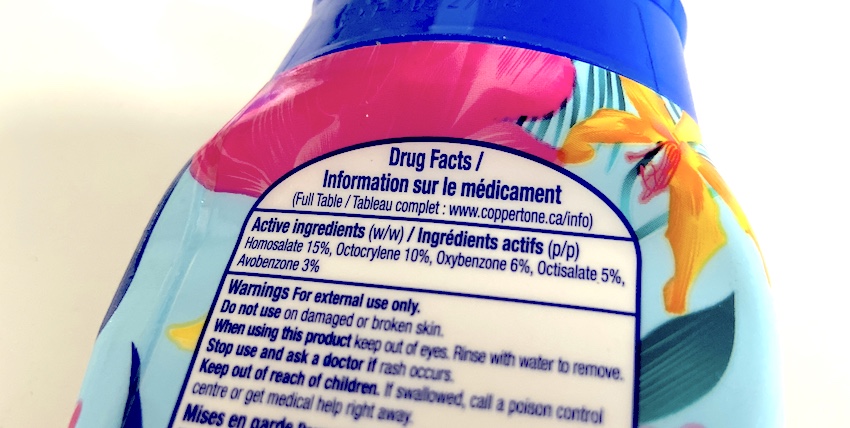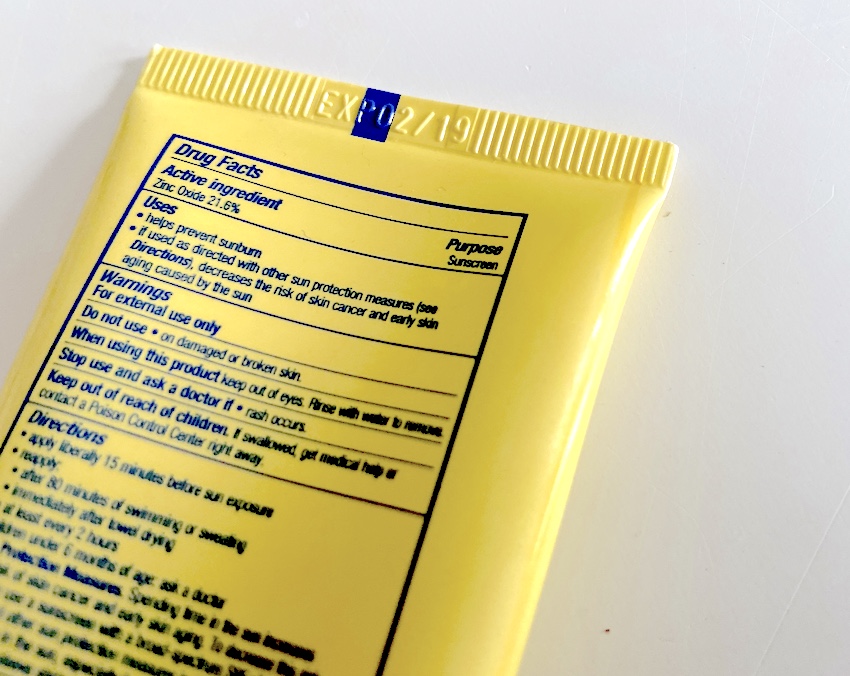In the epic battle against the sun’s dastardly UV rays, there are two main types of sunscreen: mineral and chemical.
While both types of sunscreen can do a good job protecting your skin from the sun’s harmful rays, they function a bit differently. You may end up preferring one over the other due to personal preferences or concern over how certain topical applications interact with the skin.
Don’t worry – we’ll explain all the differences between chemical and mineral (aka physical) sunscreen, and help you decide which one is the best fit for your needs!
Chemical Sunscreens: How Do They Work?
Chemical sunscreens are generally more popular and more frequently seen at local drug stores than physical sunscreens.

Chemical sunscreens work well under a wide range of circumstances, and are generally easier to find, and don’t result in any kind of residue or color left on the skin. Chemical sunscreens absorb into the skin, as opposed to physical sunscreens, which sit on top of the skin.
Chemical sunscreens work by soaking into your skin, where they absorb UV radiation and convert it into energy. That energy is transferred into heat, which is then released from the body.
The heat-releasing nature of chemical sunscreens can be problematic for sensitive and rosacea-prone skin, as well as for individuals with hyperpigmentation.
Chemical sunscreens, as their name implies, use various substances such as oxybenzone, avobenzone, octinoxate, octocrylene, octisalate, homosalate, or mixes of these to absorb UV light.

Chemical sunscreens often feature waterproof and sweatproof formulas that offer great protection, so long as the user applies enough sunscreen and reapplies every couple of hours (or however long packaging recommends).
Issues with Chemical Sunscreens
Next, we’ll delve into some of the drawbacks of chemical sunscreens that you may want to consider.
Absorption into Blood Stream
Some individuals express concern over the fact that ingredients in chemical sunscreens can potentially be absorbed into the bloodstream via skin absorption.
It’s still unknown to what degree such ingredients are absorbed into the blood, or what kind of effects this may have. While it does seem evident that there is some chemical absorption into the bloodstream, the jury is still out on whether it’s enough to really matter.
One 2019 study measured four active ingredients (avobenzone, oxybenzone, octocrylene, and ecamsule) for blood concentration by having 24 volunteers apply one of four sunscreens four times a day, for four days. All of the ingredients were found to exceed the threshold of .5ng/ml in the bloodstream after just one day. With some sunscreens, oxybenzone plasma levels were recorded at over 200 ng/mL.
There are also concerns about how oxybenzone may affect hormone levels, with some studies linking oxybenzone to health issues like endometriosis as well as a potential risk to pregnant women.
However, a 2017 paper observes that an individual would have to use oxybenzone continuously for 277 years in order for it to disrupt hormones.
Ultimately, there’s not enough current data or research to say for sure whether chemical sunscreens have significant risks associated with them. However, there is evidence to suggest that the FDA may soon require that over-the-counter sunscreen products with active ingredients that are absorbed into the bloodstream at concentrations at .5ng/ml or higher go through toxicology testing.
Effect on Coral Reefs and Marine Life
Some of the ingredients found in chemical sunscreens have the potential to dissolve in seawater, with many experts agreeing that this can have a detrimental effect on coral reefs and marine life.

In 2018, Hawaii banned chemical sunscreen containing ingredients oxybenzone and octinoxate (some of the most common ingredients in traditional chemical sunscreens), as scientists believe these compounds contribute to the bleaching of coral reefs. The absence of oxybenzone is in fact what makes sunscreen “reef safe”.
However, it’s worth noting that mineral sunscreens with nanoparticles may also have the potential to cause harm to nature too, as such small particles are able to be absorbed by coral reefs.
Physical Mineral Sunscreens: How Do They Work?
Physical mineral sunscreens work by creating a shield that sits on top of the skin, blocking and reflecting damaging UV rays to prevent them from penetrating your skin.
Since they provide a physical barrier of protection, they are commonly referred to as physical sunscreens. Many people also refer to them as mineral sunscreens, due to their ingredients. This type of sunscreen is also referred to as sunblock, due to its ability to block the sun out entirely.
Physical sunscreens contain minerals that reflect sunlight away from your skin, such as zinc oxide or titanium dioxide.

You can recognize physical sunscreens by their tendency to leave an ashy residue or white cast on the skin. They also tend to be thicker and a bit more cumbersome to apply smoothly on your skin.
People who are hesitant to use products with chemicals that are absorbed into the skin prefer mineral sunscreens (although it should be noted that current research doesn’t show that chemical sunscreens pose any kind of health risk).
Physical sunscreens are often better for people with skin conditions like eczema or rosacea because they are less likely to cause skin irritation than chemical sunscreens, since they sit on top of the skin instead of being fully absorbed.
If you find that your sunscreen causes a burning sensation on your face, or if you experience breakouts or rashes following sunscreen application, you may want to consider switching to a physical sunscreen.
Fragrances can also irritate many people, so those who are sensitive to odors will want to opt for a fragrance-free and hypoallergenic physical mineral sunscreen.
When shopping for mineral sunscreens, be sure to opt for one with at least 10% concentration of zinc oxide to ensure you’re getting true broad-spectrum protection.
Pros and Cons of Mineral and Chemical Sunscreens

Physical / Mineral Sunscreens
Pros:
- Active immedietly – no need to wait
- Full protection from UVA and UVB rays
- Won’t clog pores
- Ideal for sensitive skin
Cons:
- Can potentially be wipped or rubbed off (since protection is dependent on the ointment have a physical layer on the skin)
- White cast
Chemical Sunscreens
Pros:
- Easier to apply
- Requires less product per application
- Goes on clear, doesn’t leave a cast
Cons:
- Requires around 20 minutes to become effective
- Can be problematic for sensitive skin
- Can clog pores and casue breakoouts for acne-prone skin
- Chemical compounds must be absorbed into the skin, with a potential for some elements to enter the bloodstream
Deciding Between Chemical vs Physical Sunscreen:
Both physical mineral sunscreens and chemical sunscreens have their advantages and disadvantages, and ultimately it’s up to you to decide which kind you’ll use. However, we’ll highlight a few elements to think about when trying to choose between the two:
- What is your skin type? Those with sensitive skin will likely want to use a physical mineral sunscreen rather than a chemical sunscreen, which can be more likely to irritate skin.
- Will you be swimming? Chemical sunscreens tend to hold up better when swimming or engaging in water sports.
- Will you be working out in the sun? If you’ll be sweating a lot during your time exposed to the sun, chemical sunscreen may survive better and will be less likely to wipe off.
- Will you be consistent with reapplication? If you’re going to be out in the sun all day, reapplying suncreen every couple of hours is essential to staying safe. Think honestly about yourself – will you really take the time reapply the thicker zinc oxide mineral lotion that is more effort to apply? If you think you’ll be more likely to skimp or miss spots, opt for the eaiser-to-spread in and fast-to-apply chemical sunscreens.
- Do you have children? Gentle physical mineral sunscreens are preferred for young children, as they’re not as likely to cause skin irrtation or rashes for sensitive young skin.
- Do you have finicky teenagers? Let’s face it – teenagers are kind of obsessed with their apperance. They will be less likely to use a sunscreen that applies a white cast or makes them look odd. They also are less likely to have the patience required to really cover your body head to toe in physical sunscreen, which is thicker and more difficult to apply. If you know you or a teen is lazy about sunscreen application, opt for chemical sunscreens to stay safe!
- Are you traveling somewhere with oxybenzone is banned? Make sure to use a physical mineral-based sunscreen if you’re traveling in regions where oxybenzone is banned (or, choose a chemical sunscreen that does not contain oxybenzone, as they are slowly becoming more available).
- How risk averse are you to general chemical exposure? Are you the kind of person who always buys organic and only use natural bug juice? If you care a lot about limiting your exposure to toxins (even when it’s inconvienent), you may prefer physical sunscreens. However, if these aren’t huge concerns for you, chemical sunscreens are certainly more convienent. And in truth, there is no concrete evidence to show whether or not the elements in chemical sunscreen post any kind of risk. If you’re on the fence, one good compromise could be to at least avoid chemical sunscreen with oxybenzone.
Whatever you do, don’t pass on sunscreen! Despite some individuals expressing concerns over chemical sunscreens, there is no definitive evidence or research that should be cause for concern – however, this is plenty of research and documentation showing the dangers of sun exposure. Any sunscreen is better than none!
Additional Sun Protection Methods
Feeling overwhelmed by your sunscreen options and the necessity of regular sunscreen re-application? Sunscreen isn’t your only option! Also consider:
- UV clothing. UV Clothing that reflects UV radiation is a great alternative or complement to sunscreen applications. Wearers can use UV clothing to cover most of their skin and apply sunscreen just on the parts of their body that are exposed to the sun, such as hands, face, and feet.
- Look for Shade. Stay in the shade as much as possible and skip activities that require you to be out in direct sunlight during peak hours of UV zapage between 10am-4pm.
- Carry a Sun Umbrella. UV umbrellas provide additional protection against the sun when natural shade isn’t available. Don’t forget to gear up with a sun hat too!

